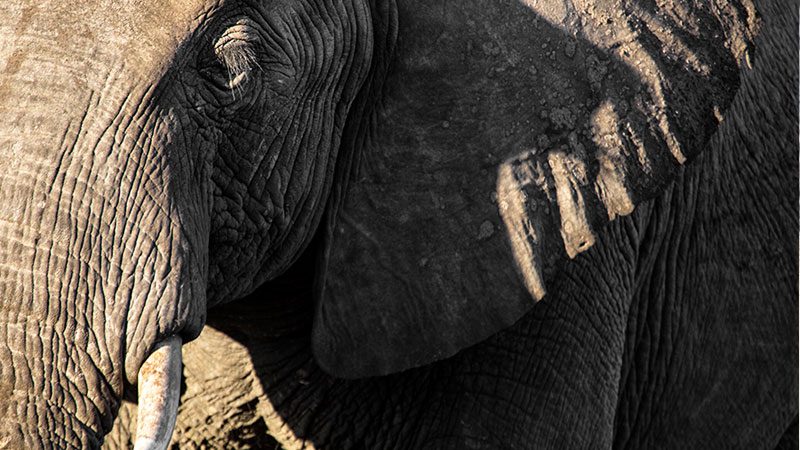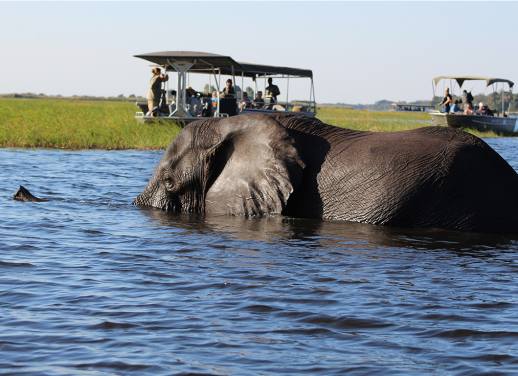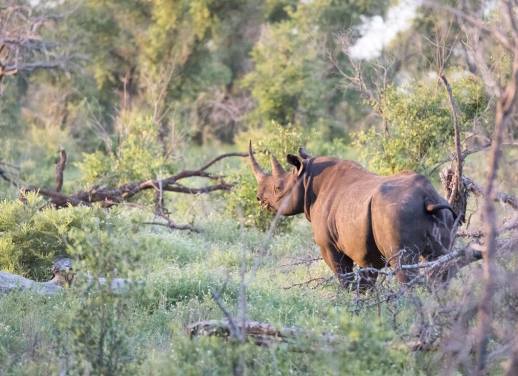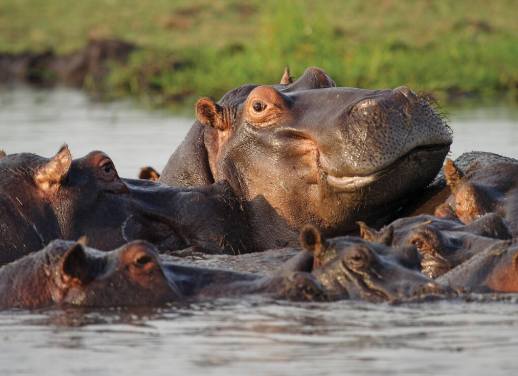Hands up who wants to go on an African safari? Now keep them up if you want to safari with a pro wildlife photographer who can show you how to take David Attenborough style shots and probably end up employed by BBC’s Planet Earth. (That last bit may or may not happen…)
Yep, this year we’re launching a one-of-a-kind expedition into the wilds of Africa with legendary photographer Ben McRae, aka this guy:

Ben on the road in Africa
We sat down with Ben and chatted all thing Africa, wildlife and lenses…
Can you tell us about your connection with Africa?
My mother is from Rhodesia – she came to Australia just before I was born – so I’ve always had family somewhere in Southern Africa. At first I never had a draw to Africa, I was always more interested in surfing. But one year I decided it was time to go surf Jefferies bay and spend time with the relatives, so I booked a trip to South Africa.
When my relatives picked me up in Durban, they had other ideas. We drove into Hluwluwe National Park and I was told we’d be there for four days. I was gutted, I wanted to surf! But the next morning we got chased by an elephant – it scared me but showed me the true side of Africa. Ever since I’ve been hooked and can’t get enough! Elephants are also my favourite creatures and subjects too!
What is it about Botswana that appeals to you as a photographer?
I think it’s the diversity. I love Namibia for the same reasons, but Botswana has more water and I feel comfortable around that. It’s also home to some of the largest populations of elephants in the world, so that’s a huge bonus. I honestly cannot get enough time watching their interactions, and they’re great subjects as they have real personalities.
I love the country’s contrasts, the fact you can drive from an amazing wet place like Chobe and the Delta, and after a few kilometres be surrounded by nothing. The Makgadikgadi and Ntwetwe Pans, the wildlife that lives there and the ancient Baobabs are like nothing else on Earth. Regardless of how many times I travel to the Pans, I’m always gobsmacked at the natural beauty. I always find myself sitting and appreciating it rather than taking images. Then I remember why I’m there and end up running around like a crazy man.
The last thing that draws me to Botswana are the San people. Their culture is the oldest on the planet, which is a great appeal in itself. The more time I spend with the San, the more I evaluate my life. They don’t rely on possessions, they rely on skills and being happy. I think seeing this and appreciating it is the essence of travel, so in my opinion it’s a no brainer that Botswana is a destination you really have to discover for yourself.
What draws you to a particular scene or subject?
I’m drawn to the beauty of Africa. It’s the reason why I picked up a camera to start with. I was blown away by the fact that in some areas of Africa you drive 100 kilometres and the people all dress differently, speak different languages, their houses were totally different. Today I find that the more I learn, the more I want to travel and photograph this diversity. It’s why my work is so heavily based around people and their environments.
I think the same about animals too though. The raw beauty of these creatures draws me in. I’ve not met anyone who’s seen a majestic bull elephant and not wanted to capture that scene. It’s an experience and a moment with one of the world’s greatest creatures that you don’t want to forget.
What do you want to capture in and say with your photographs?
I guess I want to capture the life before me. I don’t get excited easily and after years of looking through a lens I like to think I only capture real life. I love light and the way it plays. I’m always trying to capture natural day-to-day life as it is, but in a photogenic way.
Each image I take, I can remember that moment and what lead up to it. If it’s a landscape, I can feel those emotions and what the weather was like at the time. If it’s a wildlife picture, I try to get a lot of the landscape involved so the viewer gets a sense of place. They don’t have to be with me when it was taken, but looking at the image, they can feel the awe and magnitude of the landscape that I’m in, regardless of the subject. If I can share 1% of the feeling I had at the time of capture, I think I’ve portrayed my subject well.
How do you build relationships with the subjects in your photographs?
Time. I spend a lot of time. It comes in planning a location to visit. It’s reading and learning about that animal, landscape or culture so I know what to expect. With animals, it’s usually just being around them and watching their behaviour. With people, it’s sitting in the dirt, asking basic questions and figuring out what makes them tick and what they hold so dear. Photography needs a special light and in Africa that light is harsh in the middle of the day. That’s when cameras are put down and when I do the real work: getting a connection and a relationship that I hope shines through, making the image really stand out from the crowd.
With a trip like this Limited Edition Botswana Photography trip, a lot of these barriers are bought down – those on the trip will already know where to go and be there at the best time of day. It’s these factors that really help build a rapport and a step up at getting that connection within an image.
What makes environmental portraiture one of your favourite photography styles?
It’s the way that it involves the viewer and makes them feel like they’re sitting beside me. I don’t really take too many straight up portraits. They’re nice, but it often could have been taken in the back room of your house. Having a sense of place really shows off the experience and location. You’re showing the landscape in which the subject lives, so it adds an extra dimension to the image.
After all, we travel to see the world, so why not share that or capture that as a reminder of your time with that subject and where you were when the image was created. This is why I love this style of shooting – I always get so many great remarks about an image and its sense of place.
On your trip, travellers get a chance to take shots of the night sky. Can you tell us a bit about astrophotography?
Astrophotography is fun. A few years ago it was hard to capture the nights lights. But with the advancements in technology we’ve had a whole new world open up.
I think the idea scares a lot of people but once you know the basics it’s so easy to do. Even trying star trails (where large circular streaks are created across the nights sky) freaks people out, but it’s a matter of knowing the settings and letting the camera go. It’s simple photography that really has the wow factor – that’s what I hope to share with people on this departure. It is just another facet of this great trip.
Want the ultimate safari experience? Check out our African Safari Tours
Images by Ben McRae








